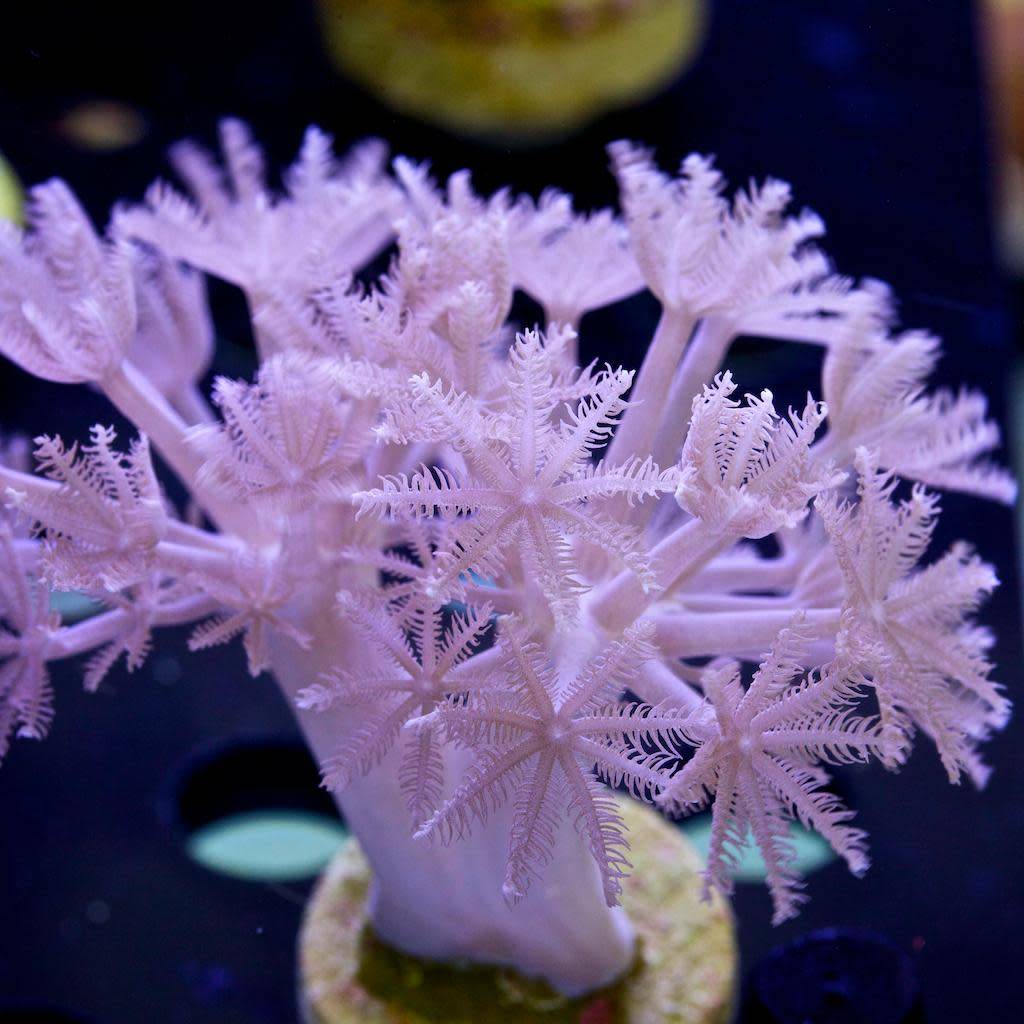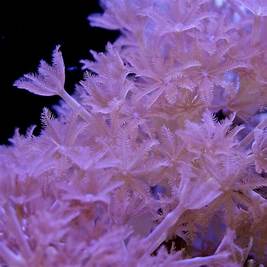Plusing Xneia
Plusing Xneia
Pulsing Xenia (often referred to as Xenia elongata or simply Xenia) is a popular soft coral species in marine aquariums. Known for its unique pulsing motion, it adds dynamic movement to a reef tank and is relatively easy to care for, making it a great option for both beginners and experienced hobbyists. Here's a comprehensive guide on caring for Pulsing Xenia:
1. Lighting Requirements
Pulsing Xenia thrives under moderate to high lighting conditions:
- Type of light: It prefers LED or T5 fluorescent lighting.
- Light intensity: A moderate to high light intensity will help it grow well. Too much light, however, can lead to bleaching.
- Light duration: Typically, 8 to 10 hours per day of lighting is ideal.
2. Water Flow
Pulsing Xenia needs moderate water movement:
- Water flow: A gentle to moderate water flow is necessary. Strong currents can cause the polyps to close up or get damaged.
- Effects of flow: They pulse when they get adequate flow, but excessive turbulence should be avoided.
3. Temperature and Water Parameters
Pulsing Xenia is relatively tolerant of varying water parameters but thrives best within certain ranges:
- Temperature: 72–78°F (22–26°C).
- pH: 8.1–8.4.
- Salinity: 1.023–1.025 specific gravity.
- Alkalinity: 8–12 dKH.
- Calcium: 400–450 ppm.
- Magnesium: 1250–1350 ppm.
- Nitrate and phosphate levels: It prefers low levels of nitrates and phosphates, as high nutrients can cause unwanted algae growth that competes with the coral.
4. Feeding
Pulsing Xenia is a filter feeder and relies primarily on photosynthesis from the light, but supplemental feeding can help boost its health:
- Zooxanthellae: It hosts photosynthetic algae (zooxanthellae) that provide energy through sunlight.
- Supplementary feeding: You can offer very fine foods like plankton, phytoplankton, or liquid coral foods to supplement its diet, especially in tanks with lower nutrient levels. However, it doesn’t require frequent feeding.
5. Placement in the Tank
- Location: Xenia should be placed in an area with moderate water flow and lighting. Avoid placing it in areas of very strong currents.
- Tank placement: It can grow on live rock or the substrate, but be cautious about letting it grow too quickly, as it can overtake nearby corals or rocks.
- Growth pattern: Pulsing Xenia can spread quickly, so it's important to monitor its growth. It can be easily trimmed back if it starts to overrun other corals.
6. Propagation and Growth
Pulsing Xenia grows rapidly under optimal conditions and can spread by budding or fragmentation:
- Budding: New polyps form from the existing colony, creating a branching effect.
- Fragging: If you need to control its spread or share it with others, you can carefully cut a piece of Xenia and attach it to a frag plug or rock.
- Growth rate: Xenia can grow very quickly, so regular maintenance (cutting back excess growth) is often necessary to prevent it from overtaking the tank.
7. Potential Issues
- Aggression: Xenia is generally peaceful but can sometimes compete with nearby corals, especially if nutrient levels are high.
- Water quality: Poor water quality (high nutrients, poor oxygenation) can cause Xenia to close up and may affect its growth or health.
- Pulsing behavior: If the pulsing stops, it could indicate stress, poor water quality, or unsuitable conditions (light, flow, or temperature issues).
8. Common Problems
- Xenia Meltdown: Sometimes, Xenia may undergo a phenomenon called "Xenia Meltdown," where it rapidly dies off, often without clear cause. Stress factors like changes in water quality, lighting, or flow can trigger this. If it happens, try to stabilize conditions and remove any affected polyps to prevent it from spreading.
- Overgrowth: As mentioned earlier, it can grow rapidly and potentially outcompete other corals or take over sections of the tank. Regular trimming is required.
9. Compatibility with Other Species
Pulsing Xenia is typically not aggressive toward other corals, but it can outcompete slower-growing species if it’s left unchecked:
- Good tankmates: Peaceful fish and invertebrates, other soft corals, and LPS (Large Polyp Stony) corals.
- Tankmates to avoid: Aggressive or fast-growing corals that may overshadow or outcompete Xenia.
Conclusion
Pulsing Xenia is a hardy and beautiful soft coral that adds motion and life to a reef tank. It is relatively easy to care for, as long as its water parameters are stable, lighting is sufficient, and it has moderate water flow. Regular maintenance, including trimming and monitoring water quality, is key to keeping this coral healthy and vibrant. It is also important to be aware of its rapid growth and take action to manage it accordingly.
Couldn't load pickup availability




